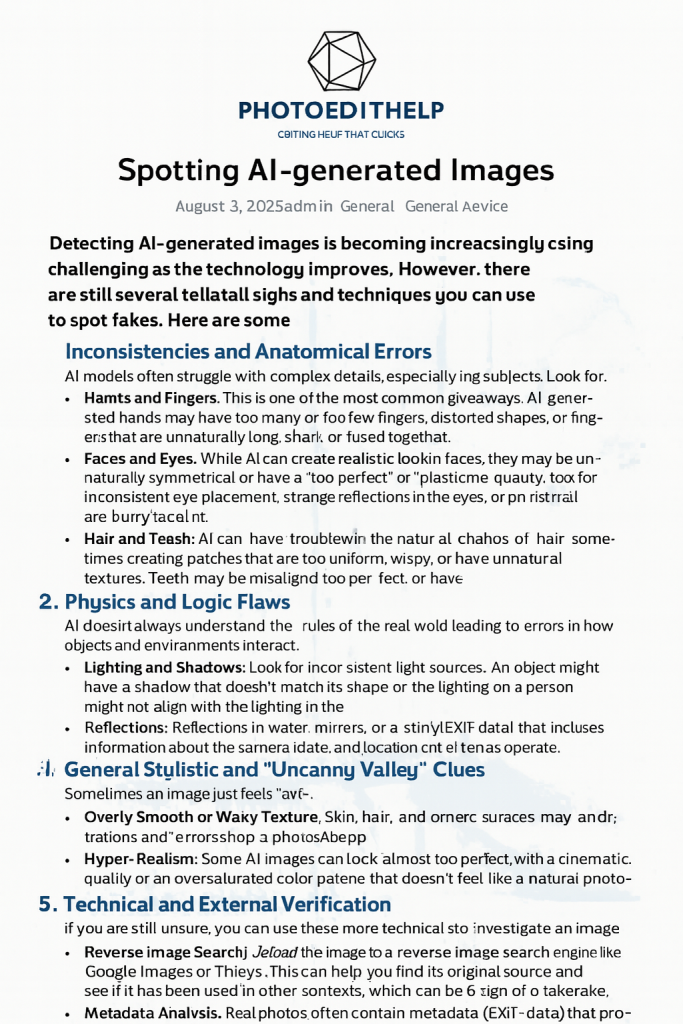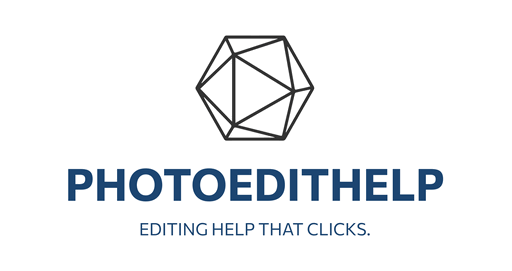Detecting AI-generated images is becoming increasingly challenging as the technology improves. However, there are still several telltale signs and techniques you can use to spot fakes. Here are some key things to look for:
1. Inconsistencies and Anatomical Errors
AI models often struggle with complex details, especially on living subjects. Look for:
- Hands and Fingers: This is one of the most common giveaways. AI-generated hands may have too many or too few fingers, distorted shapes, or fingers that are unnaturally long, short, or fused together.
- Faces and Eyes: While AI can create realistic-looking faces, they may be unnaturally symmetrical or have a “too perfect” or “plasticine” quality. Look for inconsistent eye placement, strange reflections in the eyes, or pupils that are misshapen or different sizes. In crowds, people in the background may have distorted or blurry facial features.
- Hair and Teeth: AI can have trouble with the natural chaos of hair, sometimes creating patches that are too uniform, wispy, or have unnatural textures. Teeth may be misaligned, too perfect, or have an unusual number or shape.
2. Physics and Logic Flaws
AI doesn’t always understand the rules of the real world, leading to errors in how objects and environments interact.
- Lighting and Shadows: Look for inconsistent light sources. An object might have a shadow that doesn’t match its shape or direction, or the lighting on a person might not align with the lighting in the background.
- Reflections: Reflections in water, mirrors, or shiny surfaces may be distorted, inaccurate, or contain extra, misplaced colors.
- Object Anomalies: Objects may merge into their surroundings, have an unnatural size or position, or defy gravity. Look for things like a staircase that leads nowhere, a coffee table with too few legs, or a necklace that inexplicably disappears behind a person’s hair.
3. Background and Text Issues
AI often focuses on the main subject, leading to distortions and errors in the surrounding details.
- Blurriness and Distortions: The background of an AI image is often blurry or distorted, especially in areas with complex patterns or architectural details. Walls may be oddly curved, and buildings may have impossible shapes or windows that don’t make sense.
- Repetitive Patterns: Look for repeating textures or patterns where there should be randomness, such as in foliage, fur, or crowd scenes.
- Garbled Text: AI is notoriously bad at generating readable text. Signs, logos, and words in the background will often be jumbled, misspelled, or look like nonsensical symbols.
4. General Stylistic and “Uncanny Valley” Clues
Sometimes an image just feels “off.”
- Overly Smooth or Waxy Texture: Skin, hair, and other surfaces may have an unnatural, smooth, or “photoshopped” appearance.
- Hyper-Realism: Some AI images can look almost too perfect, with a cinematic quality or an oversaturated color palette that doesn’t feel like a natural photograph.
- Sociocultural Implausibilities: An image might depict a scene that is historically or culturally unlikely, like a modern person in a historical setting or an event that never actually happened.
5. Technical and External Verification
If you are still unsure, you can use these more technical methods to investigate an image.
- Reverse Image Search: Upload the image to a reverse image search engine like Google Images or TinEye. This can help you find its original source and see if it has been used in other contexts, which can be a sign of a fake.
- Metadata Analysis: Real photos often contain metadata (EXIF data) that includes information about the camera, date, and location. AI-generated images usually lack this data.
- AI Detection Tools: There are online tools and browser extensions specifically designed to analyze images and provide a probability score of whether they are AI-generated. While not foolproof, they can be a helpful starting point – your search engine will take you to many as you could wish for !
Download this A4 Reminder Sheet – print it or keep it on your phone as a useful aide-memoire.

